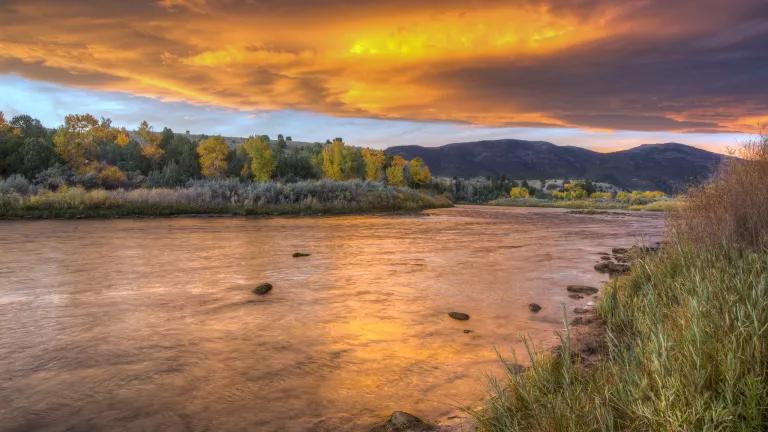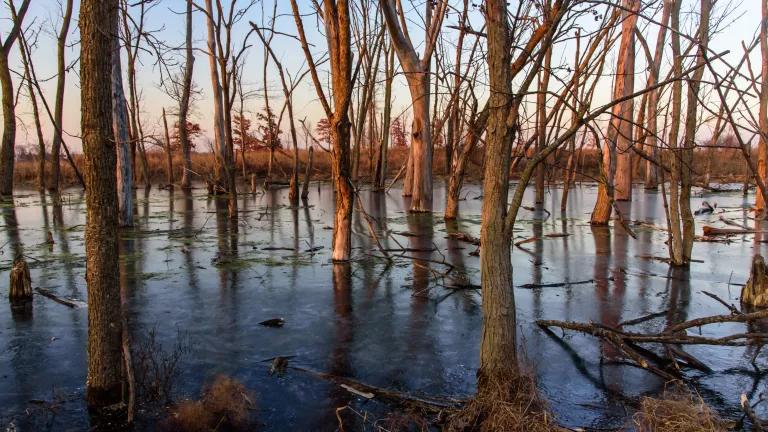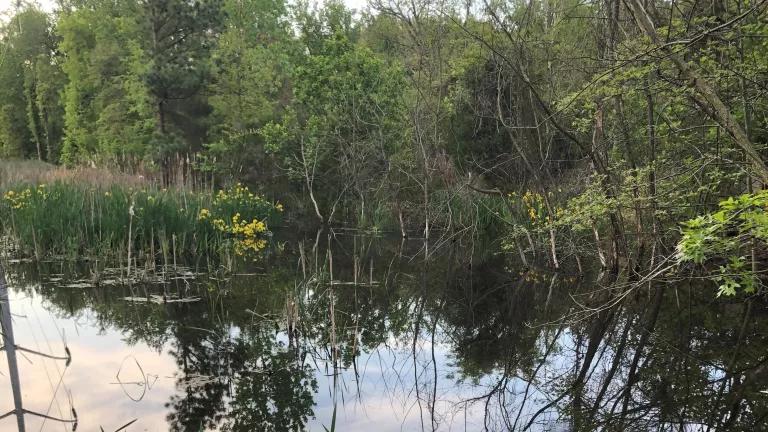
Summer may be over, but the urgent need to tackle the growing problem of harmful algal blooms (HABs) is not. On Alabama’s “white sugar sand beaches,” my colleague Arohi Sharma and I converged for the 10th U.S. Harmful Algae Symposium where attendees shared academic research results, new tools and information, and ideas for controlling the increasing problem of HABs. From the role of nutrients in driving algal growth to innovative methods for tracking Florida’s red tide to cellular-level studies of algal toxin production—the conference covered a lot! It's encouraging to see the amount of funding and scholarly work going into understanding algae in the Chesapeake Bay, the Gulf of Mexico, the Pacific Coast, and places in between. But much remains to be done.
NRDC’s presentation during the conference on What’s Lurking in Your Lake? An Assessment of States’ Freshwater Harmful Algal Bloom Programs asked attendees to think beyond the science to the management of HABs. We explained the assessment we conducted over the past year to fill the yawning gap between the need to address freshwater HABs specifically and the insufficient federal response the issue has received, which helps explain why there is no national database of HABs over time. We demonstrated our online, interactive map displaying occurrences of freshwater cyanobacteria outbreaks from 2008 to 2018 using state-reported data that we collected, and described how we scored all 50 states’ freshwater HAB programs according to a 32-point rubric. Here are some of the messages that we hope state governments, state agencies, and others will take away from our presentation:
To the states that want to invest more in HABs but need to see models of success first—We want states to use the assessment as a resource. For example, our website is probably the source where nearly all state thresholds for cyanotoxins can be found in one place. (Note that our assessment was completed before the U.S. EPA issued its 2019 Recommendations for Cyanobacteria and Cyanotoxin Monitoring in Recreational Waters.) Check out which states have well-developed HAB programs, make connections with other agency staff, and learn from each other using the tools we’ve created.
To the state that need a tool to advocate for additional resources—Use our scorecards as leverage to ask for additional resources from your governors, state legislators, or agency leaders. You can see how your state stacks up against others and identify in what areas specifically your HAB program could improve. Friendly competition among states vying for strong HAB programs could elevate more states out of the ‘satisfactory’ category into the ‘good’ and ‘excellent’ categories of our assessment.
To the state that take issue with their score—This work is ongoing, and we hope to see improvements across the board in state HAB programs. Please send us any information that you believe would help demonstrate your state’s commitment to tracking HABs, warning the public about outbreaks in a timely manner, and, most importantly, mitigating the drivers of HABs before outbreaks occur. The only way we get good, accurate data for our assessment and map if it isn’t online is through communication with states.
In her plenary talk, Meredith Howard from California’s State Water Resources Control Board charged us all with going home to our communities and figuring out what we can do on the local level. To paraphrase, she said that people know about HABs now; that wasn’t true years ago. Change on the grassroots level and improvements to monitoring and management of HABs starts with all of us, and broad-based action can get us there.
So, what are you going to differently now that you’re back in the state where you live and work? Preventing HABs ahead of HAB season is critical. We urge states to:
- Create a HAB response plan
- Set and enforce strong nutrient pollution standards
- Establish cyanotoxin thresholds—testing water after you see green isn’t protective enough
- Collect data on HABs and use it to track trends and make predictions
- Inform the public about HABs and post warnings and advisories as necessary
- Make HAB data and response plans available to the public
What we're going to do is continue working to stymie nutrient pollution in a variety of ways and address HABs in a holistic manner. Staff across NRDC are:
- Tackling concentrated animal feeding operations (CAFOs) to put a check on nutrient runoff from industrial agriculture. We created a sample state pollution control permit to monitor and regulate CAFOs that endanger the health of people and the environment.
- Promoting regenerative agriculture practices and healthy soils that reduce the need for synthetic inputs like fertilizers and pesticides and retain nutrients on fields rather than letting them wash off fields after rain events.
- Defending the Clean Water Act and pushing back against the Trump Administration’s proposed Dirty Water Rule, which would remove half of the nation’s small waterways and wetlands from federal protection. These critical waterways help filter pollutants before they reach our lakes and rivers.
- Advocating for more freshwater flows in the overdrawn rivers of California and encouraging water use efficiency and conservation. Diverting excessive water out of our rivers and lakes creates the warm, stagnant conditions in which HABs thrive.
- Improving stormwater management to prevent urban nutrient-dense runoff from entering and polluting natural waterways and waterbodies.
All these measures are an attempt to stop HABs before they become a problem in the summer time. We encourage you to take a preventative approach too and implement ideas from our assessment, the conference, and other states back home.



